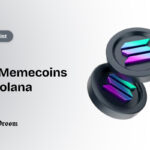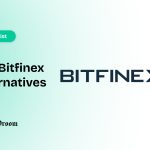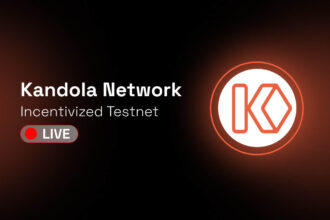TRON posted a strong first half of 2025, with rising onchain activity, ecosystem expansion, and continued leadership in the stablecoin space. The core network fundamentals point to sustained growth potential. Read the full report to learn more about TRON’s key updates and achievements.
Key Takeways
- TRON saw strong onchain performance in H1 2025, with transaction volume, active addresses, and revenue reaching near-record levels.
- USDT supply on TRON surged 41% to 81.2B, reinforcing the network’s dominance in stablecoin infrastructure.
- TRON ranked among the top blockchains in user activity and revenue, outpacing many Layer-1 competitors.
- New integrations and high-profile Super Representatives signaled rising institutional interest and long-term confidence in the network.
TRON’s H1 2025 in Rewind
In the first half of 2025 Kiln, Nansen, P2P.org, and Kraken joined the TRON network as Super Representatives, expanding and strengthening its validator base. These additions bring institutional credibility and technical expertise, reflecting growing confidence in TRON’s ecosystem. Their involvement enhances decentralization and reinforces the network’s governance and resilience.
In June 2025, a new stablecoin USD1 launched on the TRON network, introduced by World Liberty Financial. Its presence adds to TRON’s growing roster of stablecoins and, if embraced more widely in the future, could bolster the network’s reputation as a hub for stablecoin activity.
TRON’s integrations with platforms like AEON Pay, Bridge.xyz, Chainlink, MoonPay, Plume, Turnkey, and Rumble in the first half of 2025 reflected steady ecosystem expansion and growing developer interest. These partnerships span infrastructure, payments, data, and user onboarding, which improves TRON’s utility across key areas of Web3.
This ecosystem expansion, combined with strong onchain momentum, contributed to a notable rise in the market cap of TRX, the native utility token of the TRON network. Since the start of 2025, TRX’s market cap has climbed by 33.8%, fueled largely by price appreciation and continued token burns that have reduced supply and supported upward pressure.
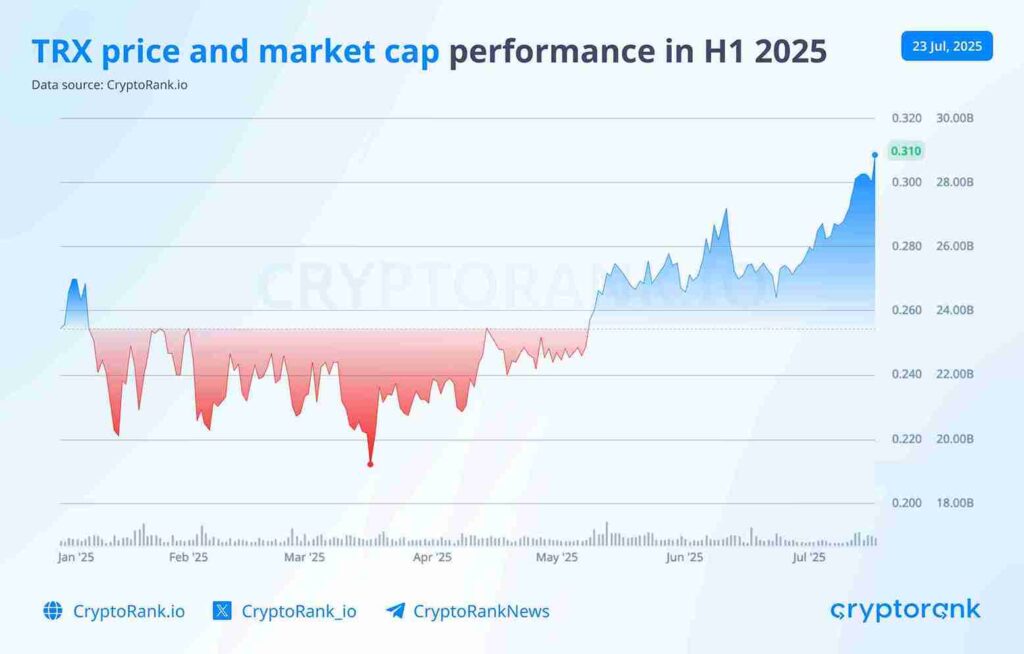
TRON On-chain Metrics Show Sustained Growth and Rising User Activity
TRON’s network utilization continued its upward trend in Q2 2025, reflecting growing demand and consistent user engagement. The quarter recorded over 784M transactions, making it the second-highest in the network’s history, just behind the peak in Q1 2023. This sustained growth in activity highlights the strength of TRON’s onchain ecosystem and its ability to attract and retain transaction volume at scale.
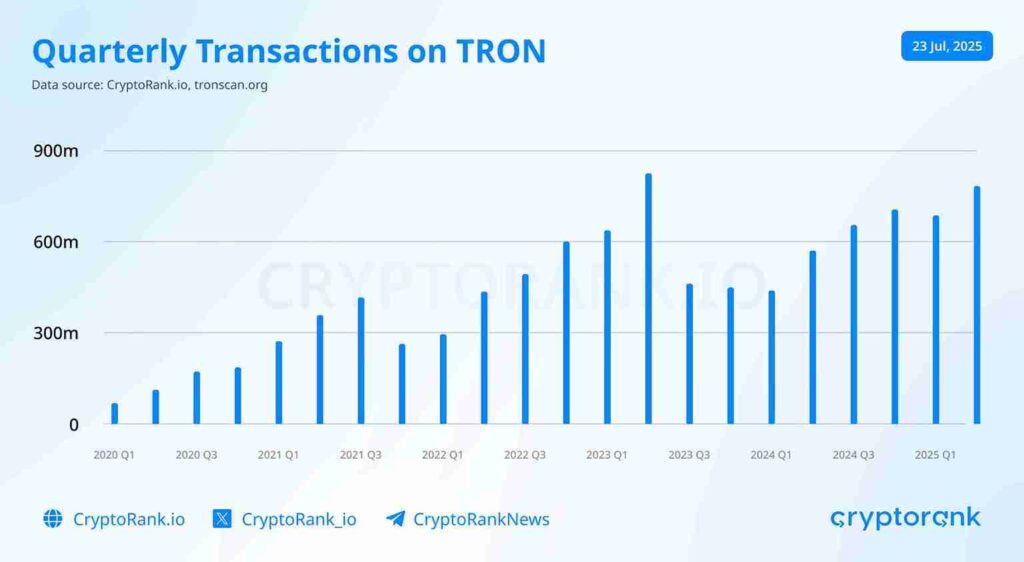
Quarterly Transactions on TRON
TRON ranked among the top five blockchain networks by transaction volume in H1 2025. While ICP and Solana led the chart by a wide margin, TRON held a solid position ahead of major competitors like BNB Chain, Near, and Sui.
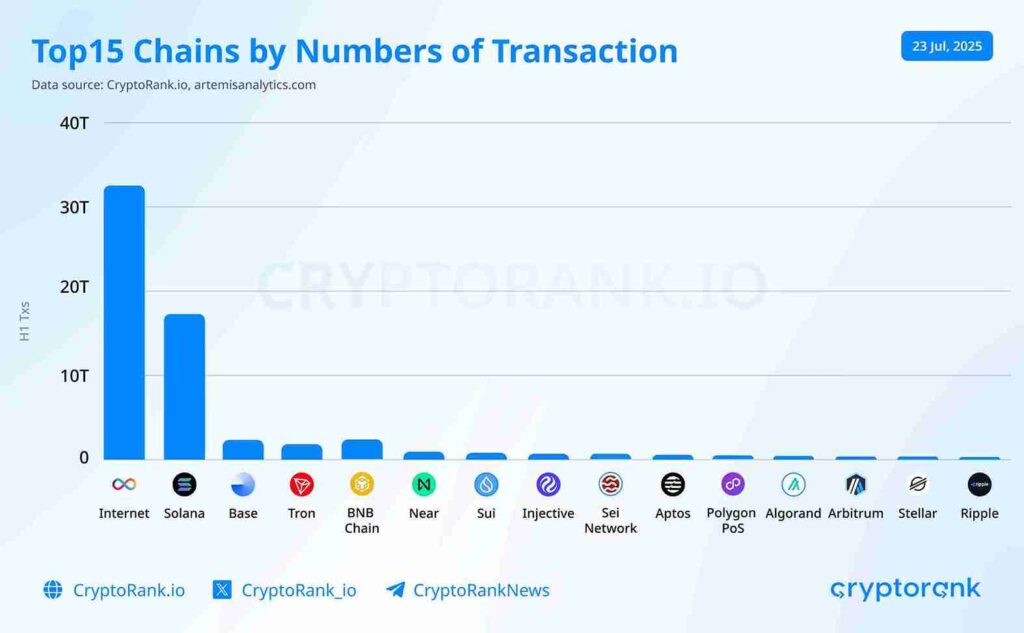
TRON’s quarterly revenue continued to climb in H1 2025, reflecting both rising on-chain activity and sustained ecosystem growth. After a steady uptrend throughout 2024, revenue accelerated sharply over the past two quarters, reaching almost $1 billion in Q2 2025. This marks the network’s highest revenue to date.
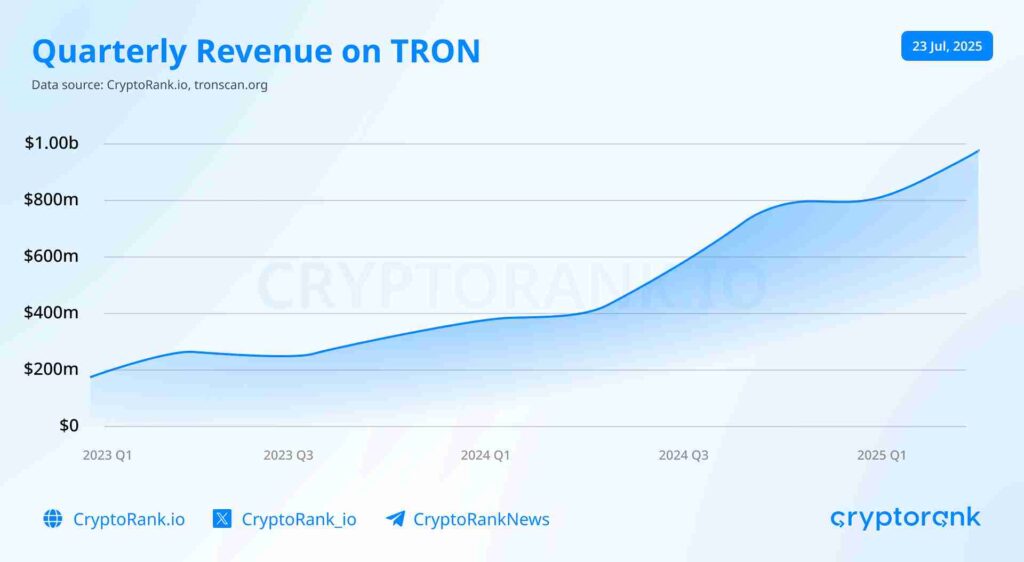
Quarterly Revenue on TRON
Moreover, TRON led all blockchain networks in burning revenue during H1 2025, outperforming Ethereum and Solana by a wide margin. With almost $319M in burning revenue in H1, TRON secured the top spot ahead of traditionally dominant platforms, reflecting its high transaction volume and efficient value capture. This strong financial performance highlights TRON’s growing role not just as a high-usage network, but as one of the top-earning blockchain.
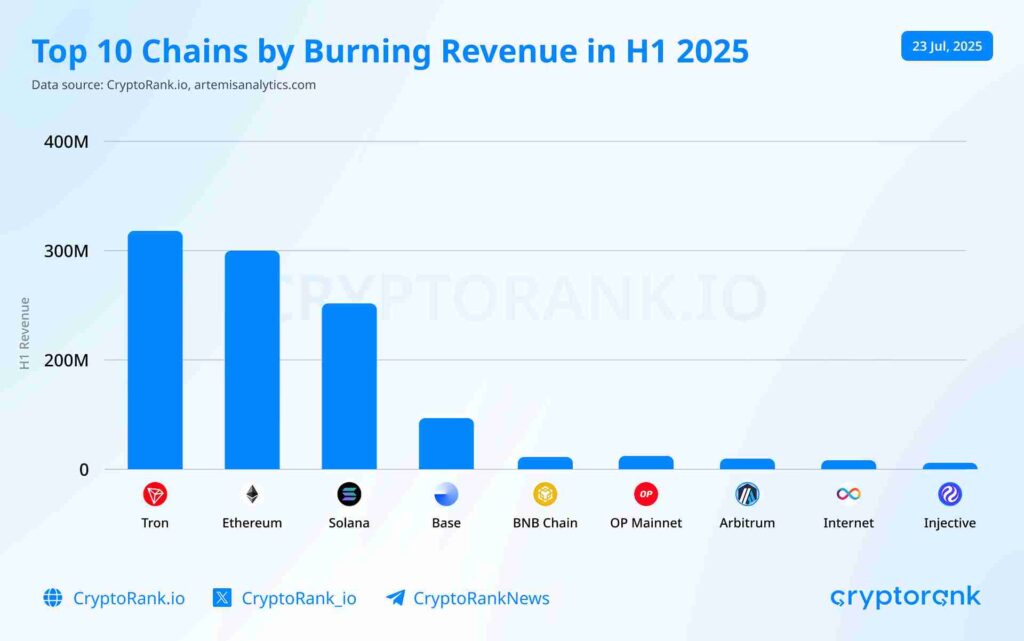
Monthly active addresses on TRON remained consistently strong throughout H1 2025, showing a clear rebound from mid-2024 levels. After a period of slight fluctuation, user activity picked up steadily in early 2025, culminating in the highest monthly count in over a year by May. This uptick likely comes from an increased usage of stablecoins on TRON.
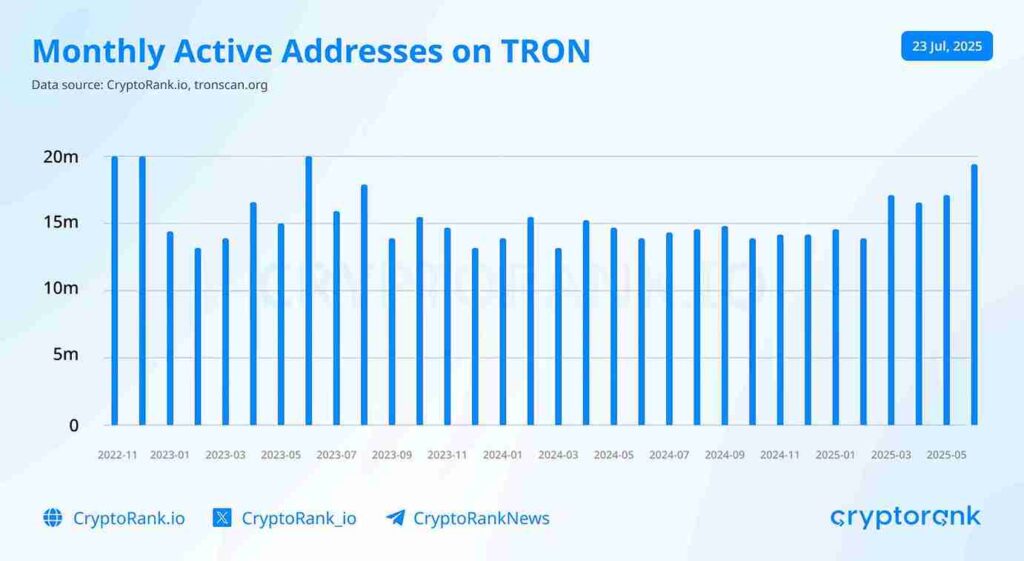
Monthly Active Addresses on TRON
TRON ranked third among all blockchains in average daily active addresses during H1 2025, trailing only Solana and Near. With a significantly higher count than BNB Chain, Base, and Aptos, TRON maintained a strong position in user activity despite fierce competition. This ranking underscores the network’s ability to retain a large and engaged user base, reinforcing its relevance in the broader Layer 1 landscape.
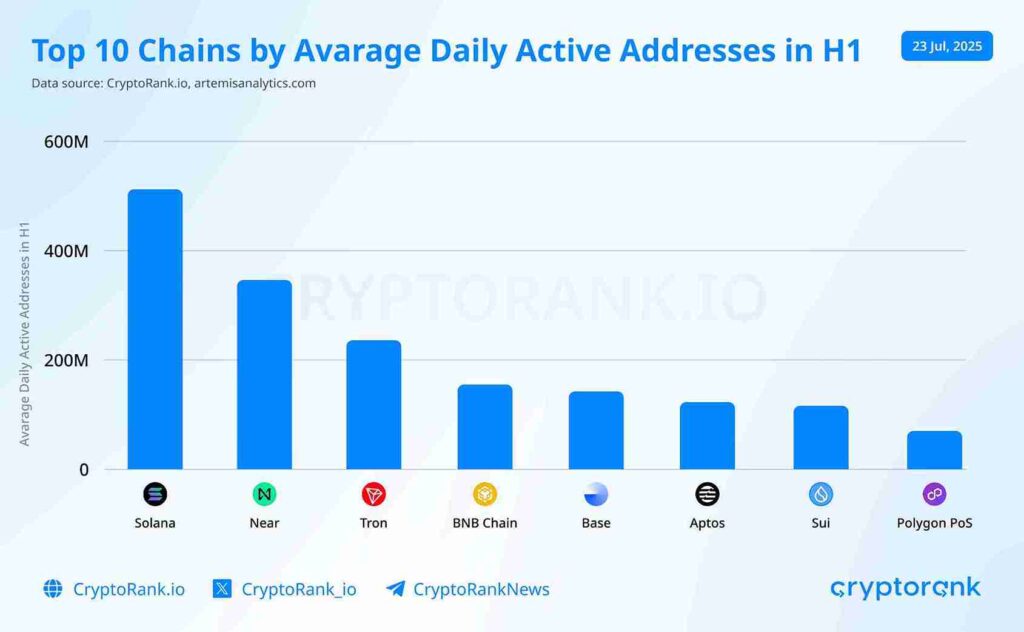
Stablecoin Growth on TRON Signals Rising Network Utility
TRON solidified its lead as the primary network for USDT in H1 2025, driven by accelerating demand and growing utility. The supply of USDT on TRON reached 81.2 billion by the end of the half, marking a 41% increase since 2024. This surge reflects both rising demand for stablecoins and TRON’s dominance as a preferred settlement layer for USDT transfers. The rapid growth reinforces TRON’s position as the leading network for Tether issuance, well ahead of competitors in both volume and adoption.

USDT Supply on TRON
TRON remained one of the leading blockchains in stablecoin activity during H1 2025, ranking third in total transfer volume behind only Base and Ethereum, where activity is primarily driven by other stablecoins. Despite intense competition from newer and faster-growing chains, TRON outpaced Solana, BNB Chain, and Polygon. Its consistent performance in this metric highlights the platform’s deep integration into global crypto payments and remittance flows.
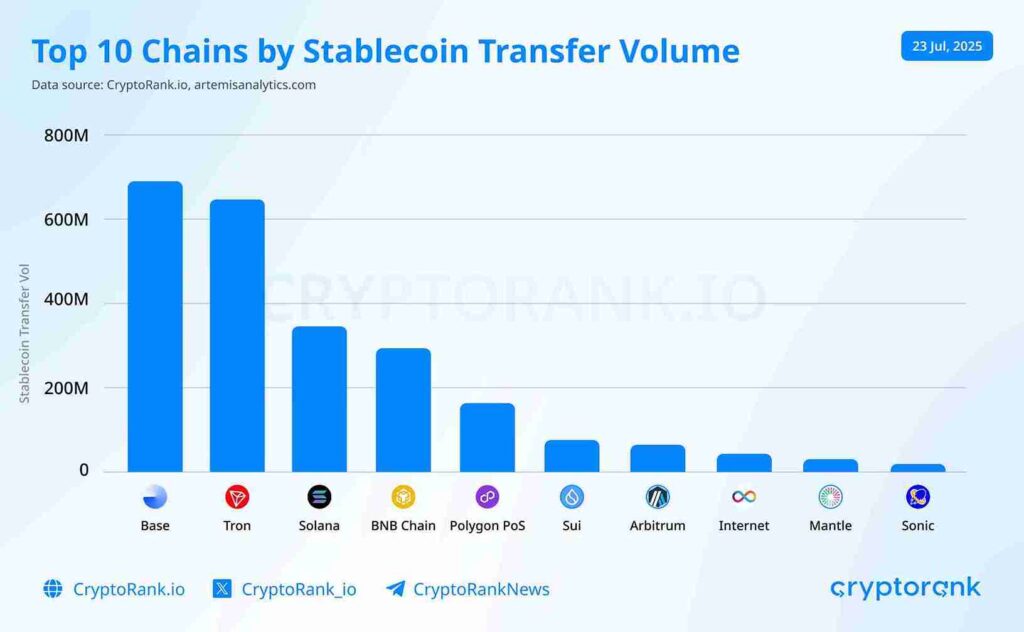
TVL Slides as TRON’s DeFi Sector Navigates a Reset for a Potential Rebound
Since the start of 2025, TRON’s DeFi ecosystem has faced headwinds, with USD-denominated TVL falling by 33%, from nearly $7.5B to $5B. This decline not only reflects broader market volatility but also led to TRON losing its spot as the third-largest blockchain by TVL.
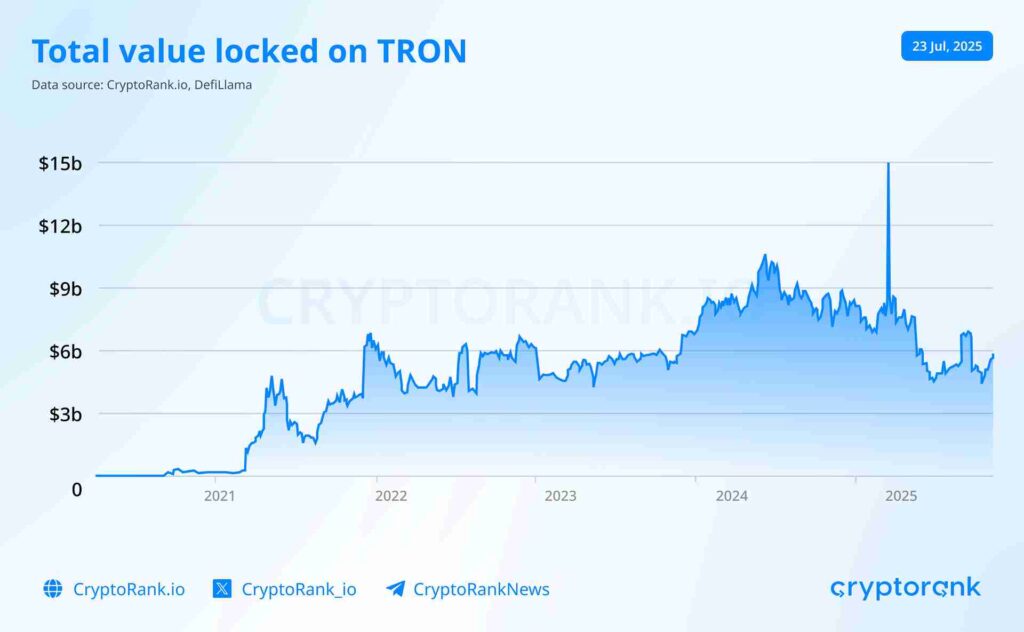
The launch of USDD 2.0 in January 2025 marks a strategic step toward reinvigorating TRON’s DeFi ecosystem. Unlike its predecessor, which was managed by the TRON DAO Reserve, the updated stablecoin is now fully governed by decentralized smart contracts. Users can mint USDD directly by depositing TRX and USDT, with no centralized custodian involved. This shift not only enhances transparency but also reduces the risk of centralized control or asset freezes. With migration to the new system now underway, USDD 2.0 could help restore confidence in TRON-native DeFi and serve as a foundation for future protocol growth.
TRON currently ranks fifth among all blockchains by total value locked, holding 1.95% of the global TVL. This marks a drop of a few positions compared to earlier in the year, reflecting the impact of recent capital outflows and heightened competition. While Ethereum continues to dominate with 66.2%, and chains like Solana and BNB Chain maintain strong positions, TRON’s share remains notable, indicating it is still a relevant player in the DeFi landscape despite recent declines.
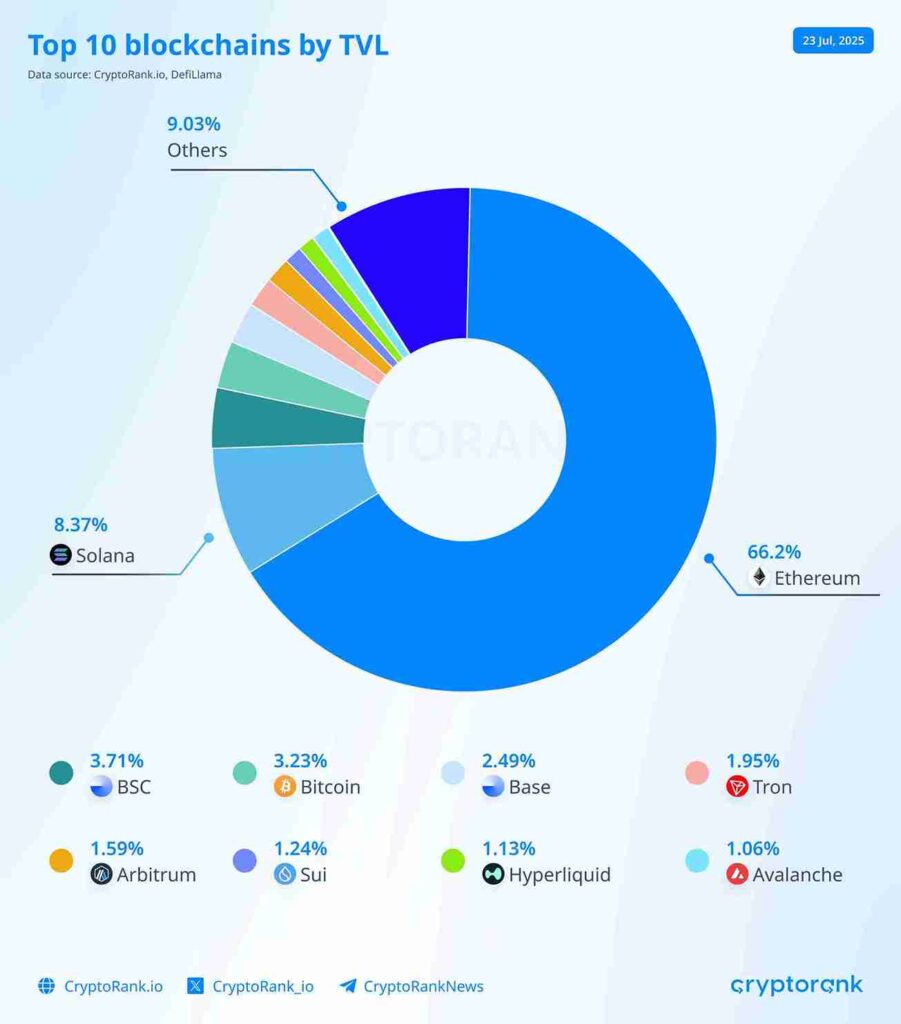
The Bottom Line
TRON’s performance in H1 2025 demonstrated the network’s continued strength as a high-throughput, revenue-generating blockchain with a deeply integrated role in global stablecoin infrastructure. Key metrics such as transaction volume, number of active addresses, and protocol revenue all trended positively, placing TRON among the top-performing chains. Consistent USDT growth further underscored its appeal to both users and institutional partners.
However, challenges remain. TRON’s decline in TVL and its slip in DeFi rankings highlight areas where the network could deepen its competitive positioning, particularly in attracting more capital-intensive applications and developers. Strengthening its DeFi ecosystem and increasing cross-chain composability will be critical to long-term resilience.
Looking ahead, TRON’s dominant position in the stablecoin economy, especially as the leading network for USDT, could be a major catalyst for future growth. If the US moves toward regulatory clarity or approval of frameworks like the GENIUS Act, demand for stablecoins could surge. In that scenario, TRON is well positioned to capture a significant share of new user flows, cementing its role as a foundational layer for digital dollar transactions worldwide.




